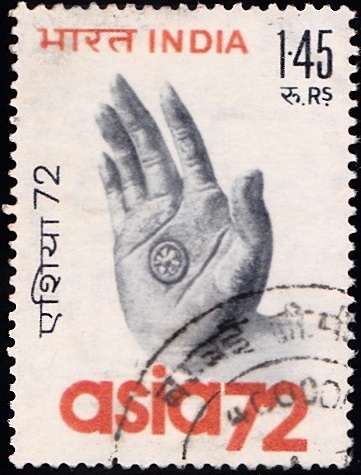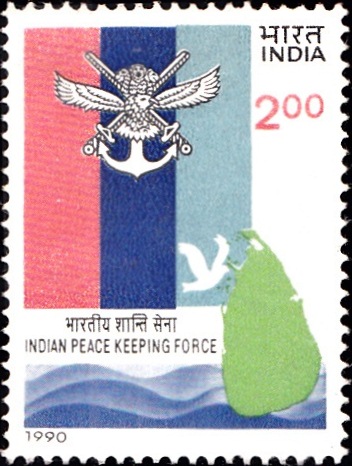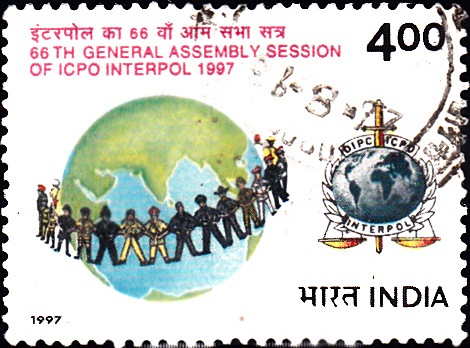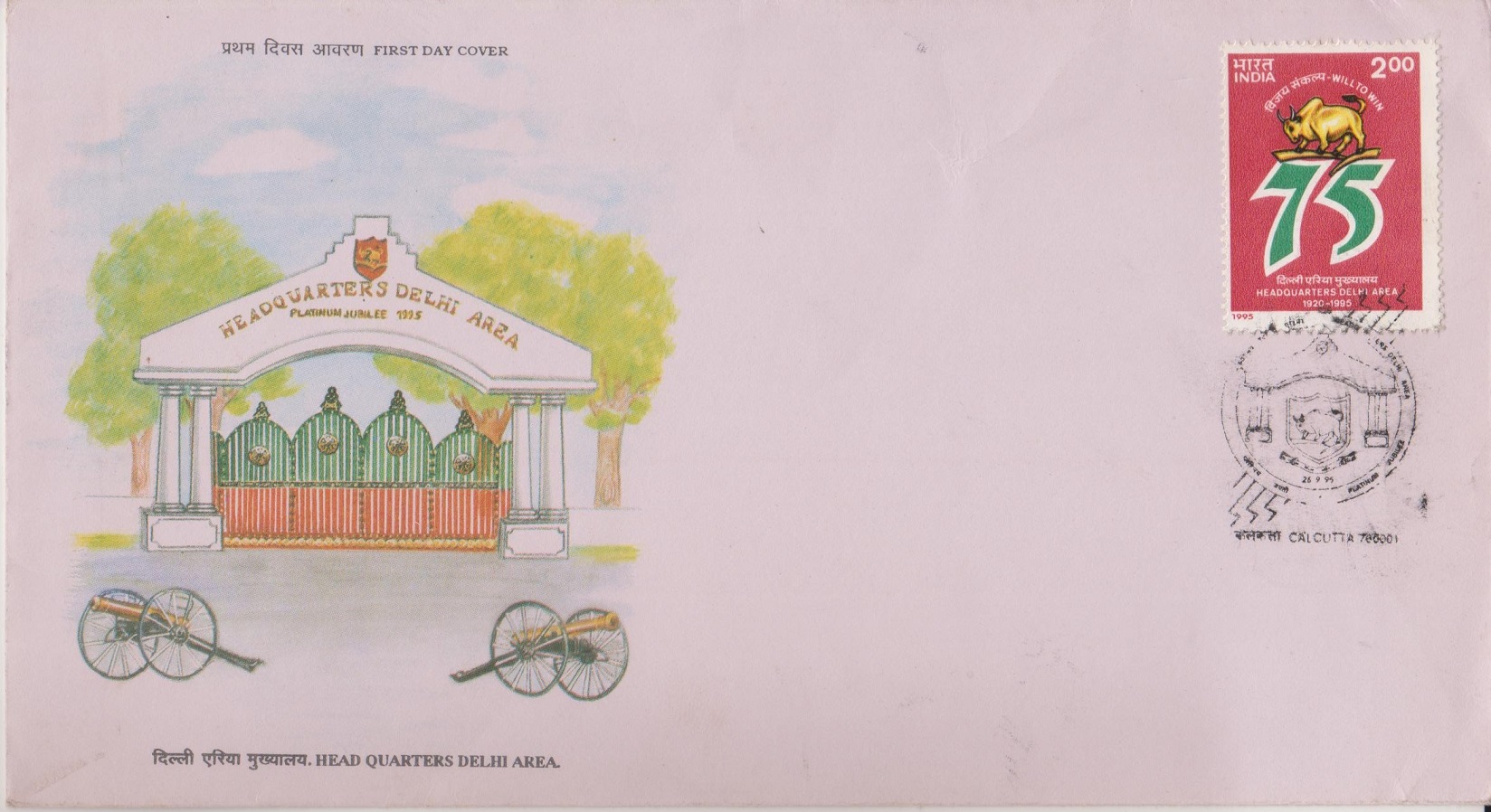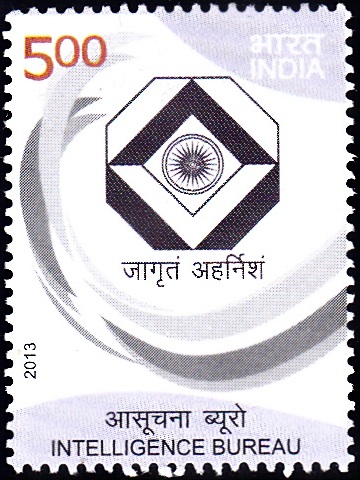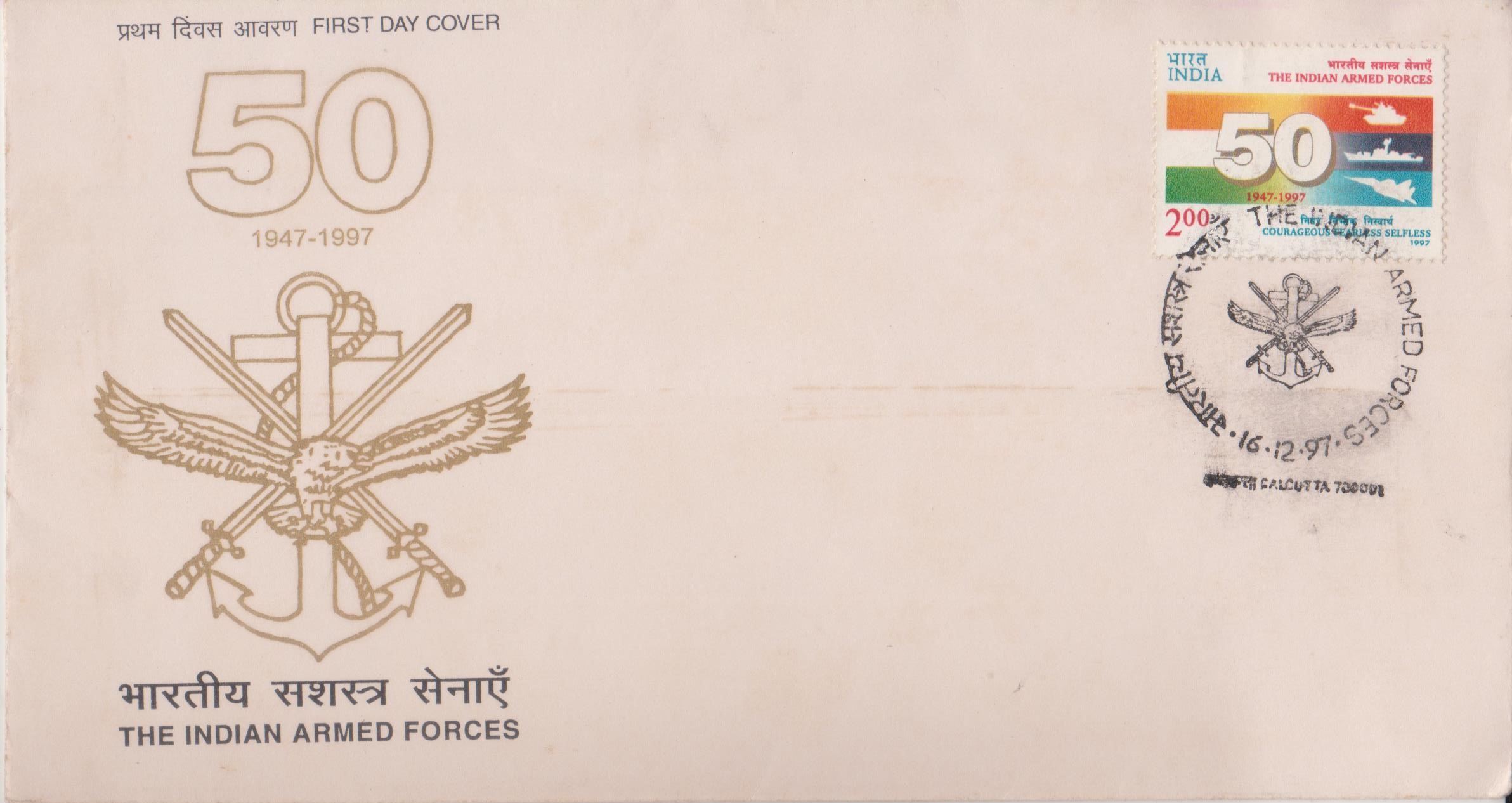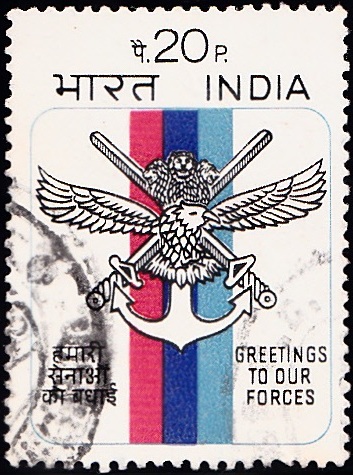
Indian Defence Services
A commemorative postage stamp on the Defence Services of India :
Issued on Aug 15, 1972
Issued for : The Indian Posts and Telegraphs Department feel highly honoured in commemorating the valiant role played by the Armed Forces of India in the cause of the Motherland during the last 25 years of Independence, by bringing out a commemorative stamp. On this occasion, the Indian P&T Department joins the rest of the country in remembering with deep gratitude the several sacrifices and hardships endured by the members of Armed Forces in continuing to keep the flag of India flying high. The commemorative stamp brought out on the occasion depicts the inter Services Crest.
Description of Design : The design of the stamp is vertical and depicts the inter Services Crest. The three strips of Army, Navy and Air Force colours are shown in the background.
Type : Stamp, Postal Used
Colour : Army Red, Navy Blue, Air force Blue & Process Black
Denomination : 20 Paise
Overall Size : 3.91 X 2.90 cms.
Printing Size : 3.56 X 2.54 cms.
Perforation : 13 x 13
Watermark : Printed on unwatermarked Photogravure Coated adhesive paper
Number Printed : 30,00,000
Number per issue sheet : 50
Printing Process : Photogravure
Designed and Printed at : India Security Press
About :
- The origins of the Indian Army as it has evolved today can be traced back to the early days of the East India Company. Subsequently in 1858 when the British Crown assumed direct control of India and the East India Company ceased to exist, there was a major reorganisation of the Indian Army. With the dawn of Indian Independence in 1947, the armed forces of India had an entirely different role to play – with new goals to spur them on and new aspirations. Now to the Armed Forces fell the mantle of defending the sacred Motherland from external aggression.
- Few armies in the world have undertaken such diverse tasks as the Indian Army during the last 25 years. Very soon after Independence, the Army was actively assisting the established civil authority in the country affording protection to millions of displaced persons and in maintaining law and order. Even before this task was achieved the Army had to rush to Jammu and Kashmir to repulse attacks by a large body of well-organised raiders. In this task, the Indian Air Force joined hands with the Indian Army. With the excellent co-operation between the two wings of the armed forces, the nation effectively frustrated the designs of the raiders. In this pre-bomber era of the Indian Air Force, the IAF had to undertake bombing sorties with Dakota, transport aircraft.
- In 1962, India had to face a powerful challenge on its northern borders. In meeting the threat from across the northern borders, the armed forces of India had to face many seemingly insurmountable difficulties. There were the problems of man-power, communications, logistics and acclaimatisation in a very difficult terrain. Notwithstanding these difficulties, the Indian Jawans fought valiantly from Ladakh in the West to NEFA (North-East Frontier Agency) in the East.
- The IAF provided magnificent succour and sustenance to the Jawans posted at bleak heights in the Himalayas and in the remote fastness of the NEFA by airlifting supplies and ammunition to the forward postilions which involved constant flying in unchartered hilly terrains and jungle in the trickiest weather with no ground aids.
- In 1965, the Armed Forces of India were called upon to meet another aggression from across the western boundaries. The attack started in Kutch and soon spread to Jammu and Kashmir. In the fighting that continued for 25 days, the Army blunted the attack all along the border. In this war again, the deployment of the IAF was of great help to the Army in checkmating the advance of enemy armour in the Chhamb sector.
- In 1971 once again, the people of India had to face a new challenge arising from the influx of 10 million refugees and renewed tension on the borders. When the enemy launched a sudden and pre-mediated attack, the armed forces swung into action quickly and effectively met the aggressor. In meeting this external aggression during 1971, all the three wings of the armed forces acted in unison. The fledging Indian Navy which we inherited from the British in 1947, had by now grown its wings (the aircraft carrier VIKRANT had joined the fleet in 1961) and had also moved into the third dimension with the acquisition of submarines in 1968. By 1971, the Indian Navy had entered the missile era. In 1971 war, the Indian Navy not only protected the integrity of India‘s long coast line against aggression but also carried out daring attacks into the enemy’s harbours. Thanks to the excellent co-ordination between the three services, the aggression was quickly repulsed and very soon the armed forces added another feather to their cap in helping the liberation of Bangla Desh.



